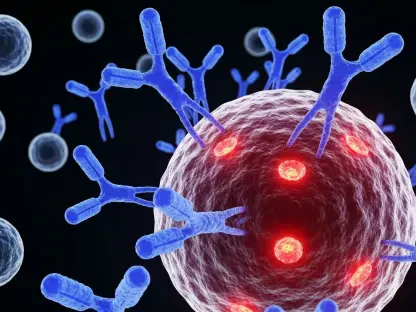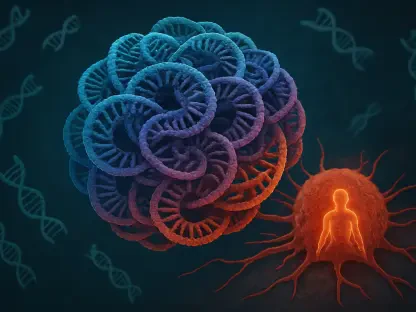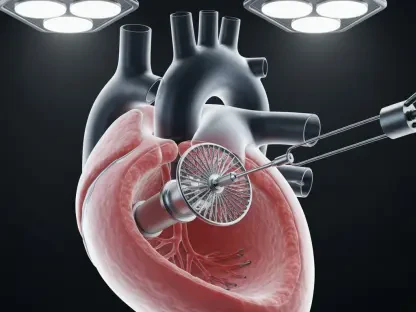The pursuit of more effective and precise medical treatments has led to the exploration of innovative drug delivery systems, one of which involves the use of ultrasound-activated nanoparticles. These systems represent a promising solution for overcoming the challenges associated with conventional drug delivery methods, notably the difficulty of targeting specific areas within the body while minimizing side effects. Recent research funded by the National Institutes of Health and conducted by the University of Utah has tested this approach in non-human primates, aiming to selectively release drugs in targeted brain regions.
The Role of Ultrasound in Medicine
Ultrasound technology has broadened its scope from merely serving diagnostic purposes to encompassing therapeutic applications. One of the more exciting aspects of ultrasound’s potential lies in its ability to enable highly focused interventions. This precision is harnessed to develop a system where ultrasound-sensitive nanoparticles can deliver drugs directly to targeted locations. This approach not only capitalizes on ultrasound’s well-known imaging capabilities but also employs its therapeutic potential to revolutionize drug delivery.
A principal challenge in drug delivery, especially within the brain, has been achieving targeted delivery without causing widespread distribution and, consequently, undesired side effects. Traditional methods often fail to localize treatment effectively, resulting in the drug affecting both the intended and unintended areas. The use of ultrasound to activate specially-engineered nanoparticles offers a compelling solution by enabling precise medication release, which significantly enhances specificity and reduces side effects. This innovative method stands to potentially transform treatments for a variety of medical conditions requiring targeted intervention.
Engineering Ultrasound-Sensitive Nanoparticles
The scientific team at the University of Utah has successfully engineered a novel type of nanoparticle specifically designed to respond to focused ultrasound. Comprising a three-layer structure, these nanoparticles have an inner core that consists of a contrast agent responsive to ultrasound, facilitating precise imaging and targeting. Encased within the middle layer is the drug itself, which remains securely encapsulated until the nanoparticles are activated. The outer shell provides additional stability and safeguards the nanoparticles as they travel through the bloodstream.
This nuanced, multilayered design ensures that the therapeutic agents are only discharged at the desired location, thanks to the focused ultrasound activation. The engineered stability allows the nanoparticles to remain functional for about 30 minutes in the bloodstream, a period suitable for potential human application. This controlled release mechanism is pivotal for ensuring that the drug reaches the target site without any premature release, thus maximizing efficiency and minimizing any collateral damage to surrounding tissues.
Proof-of-Concept in Non-Human Primates
Taking a significant step toward potential human clinical applications, the innovative drug delivery method underwent rigorous testing in non-human primates. For these trials, nanoparticles were loaded with propofol, an anesthetic, and introduced into the bloodstream. Subsequent precise application of focused ultrasound pulses targeted specific brain regions, resulting in the localized release of propofol. Notably, this targeted drug release was found to be both safe and effective, as well as reversible, in the primate models.
Crucially, the localized release of propofol within targeted visual brain regions instigated specific behavioral changes in the primates, such as alterations in their visual choices. These observations were consistent with the expected region-specific neural inhibition, underscoring the method’s potential for precise drug delivery. Furthermore, the ability to administer lower doses of drugs effectively curtails their interaction with non-target tissues and organs, thereby significantly reducing the risk of side effects.
Potential Applications and Future Directions
The quest for more effective and accurate medical treatments has driven the exploration of innovative drug delivery systems. One groundbreaking method involves ultrasound-activated nanoparticles. These systems offer a promising solution to the challenges posed by traditional drug delivery techniques, especially the difficulty of targeting specific areas in the body while reducing side effects. Recent research funded by the National Institutes of Health and carried out by the University of Utah has tested this innovative approach on non-human primates. The objective was to selectively release drugs in targeted brain regions, demonstrating the potential for significantly improved treatment precision. These findings highlight the potential of ultrasound-activated nanoparticles to revolutionize how medications are delivered, opening the door for treatments that are not only more targeted but also come with fewer adverse effects. By using this method, it becomes feasible to address various medical conditions with unprecedented specificity and efficiency, ultimately leading to better patient outcomes and transforming the landscape of modern medicine.









